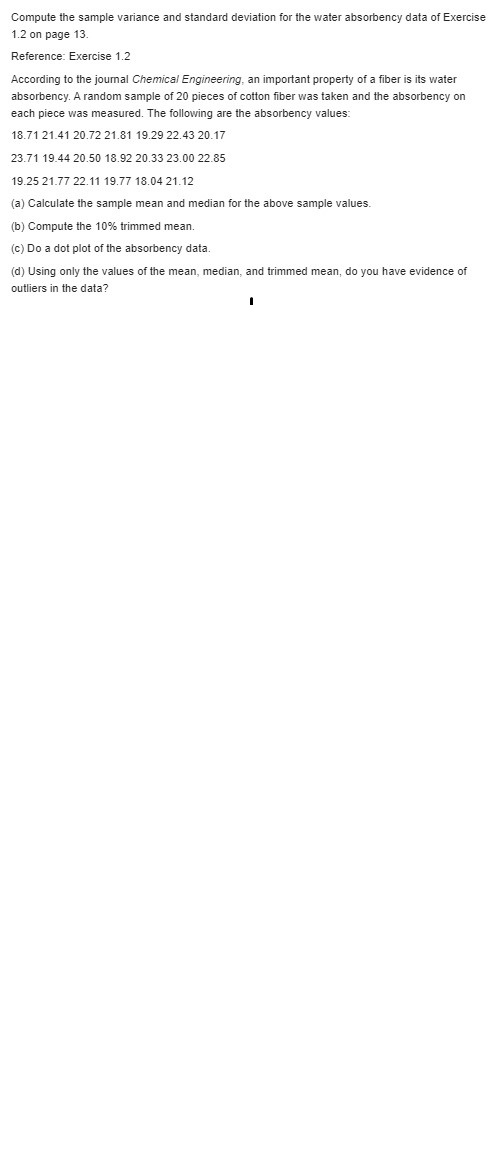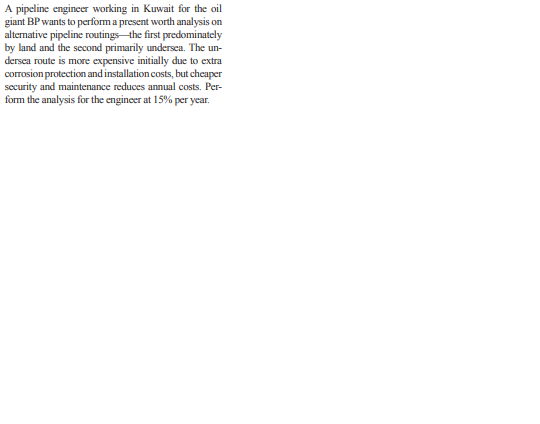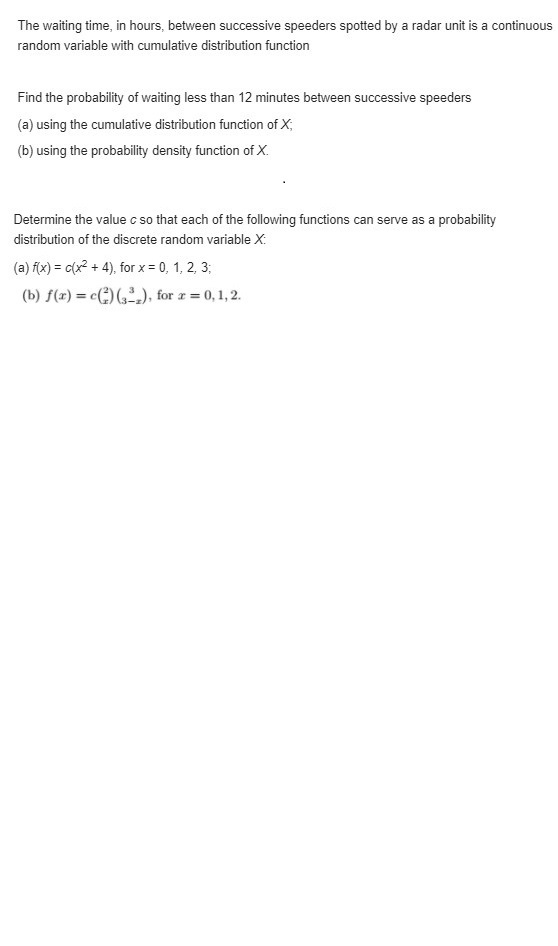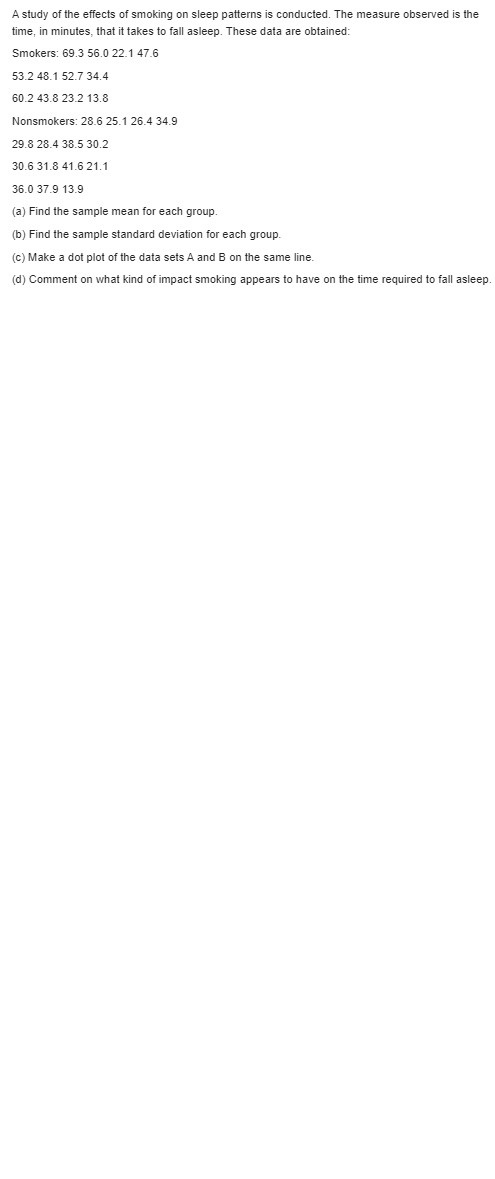solve the question
Compute the sample variance and standard deviation for the water absorbency data of Exercise 1.2 on page 13. Reference: Exercise 1.2 According to the journal Chemical Engineering, an important property of a fiber is its water absorbency. A random sample of 20 pieces of cotton fiber was taken and the absorbency on each piece was measured. The following are the absorbency values: 18.71 21.41 20.72 21.81 19.29 22.43 20.17 23.71 19.44 20.50 18.92 20.33 23.00 22.85 19.25 21.77 22.11 19.77 18.04 21.12 (a) Calculate the sample mean and median for the above sample values. (b) Compute the 10% trimmed mean. (c) Do a dot plot of the absorbency data. (d) Using only the values of the mean, median, and trimmed mean, do you have evidence of outliers in the data?A pipeline engineer working in Kuwait for the oil giant BP wants to perform a present worth analysis on alternative pipeline routings-the first predominately by land and the second primarily undersea. The un- dersea route is more expensive initially due to extra corrosion protection and installation costs, but cheaper security and maintenance reduces annual costs. Per- form the analysis for the engineer at 15% per year.\fThe waiting time, in hours, between successive speeders spotted by a radar unit is a continuous random variable with cumulative distribution function Find the probability of waiting less than 12 minutes between successive speeders (a) using the cumulative distribution function of X; (b) using the probability density function of X. Determine the value c so that each of the following functions can serve as a probability distribution of the discrete random variable X: (a) f(x) = c(x2 + 4), for x = 0, 1, 2, 3; (b) f(x) = c() (->), for x = 0, 1, 2.A study of the effects of smoking on sleep patterns is conducted. The measure observed is the time, in minutes, that it takes to fall asleep. These data are obtained: Smokers: 69.3 56.0 22.1 47.6 53.2 48.1 52.7 34.4 60.2 43.8 23.2 13.8 Nonsmokers: 28.6 25.1 26.4 34.9 29.8 28.4 38.5 30.2 30.6 31.8 41.6 21.1 36.0 37.9 13.9 (a) Find the sample mean for each group. (b) Find the sample standard deviation for each group. (c) Make a dot plot of the data sets A and B on the same line. (d) Comment on what kind of impact smoking appears to have on the time required to fall asleep











